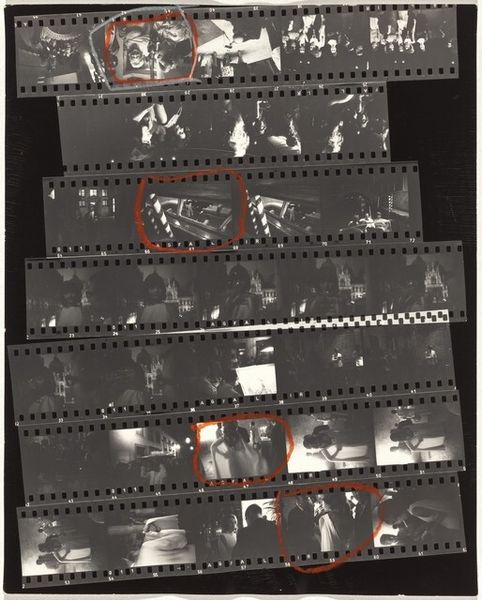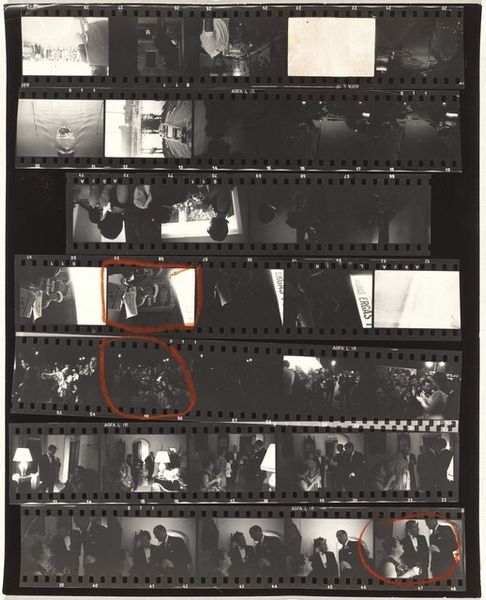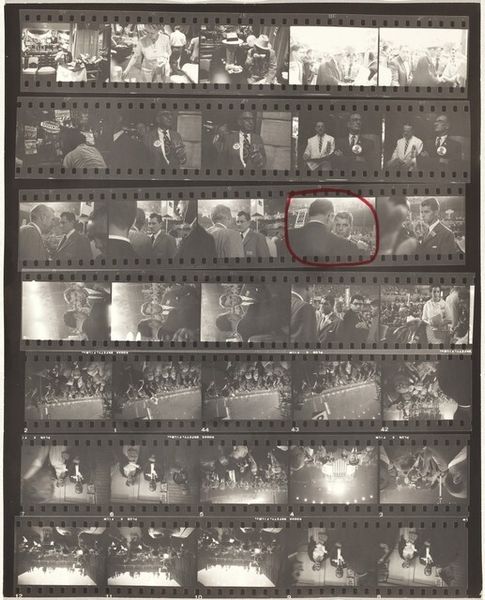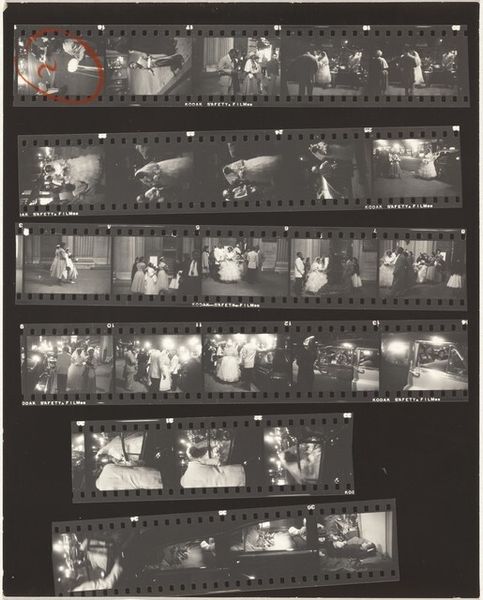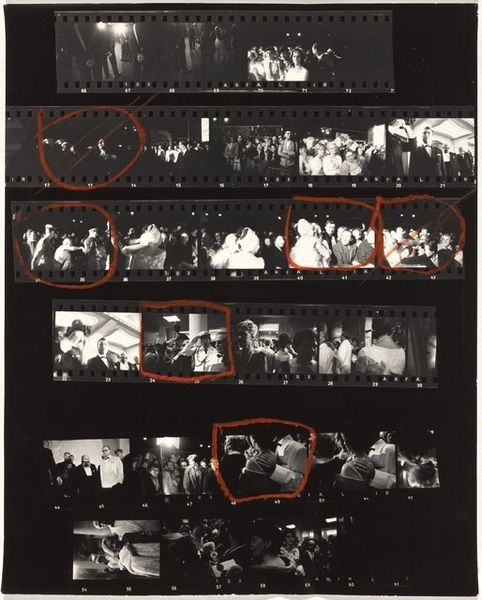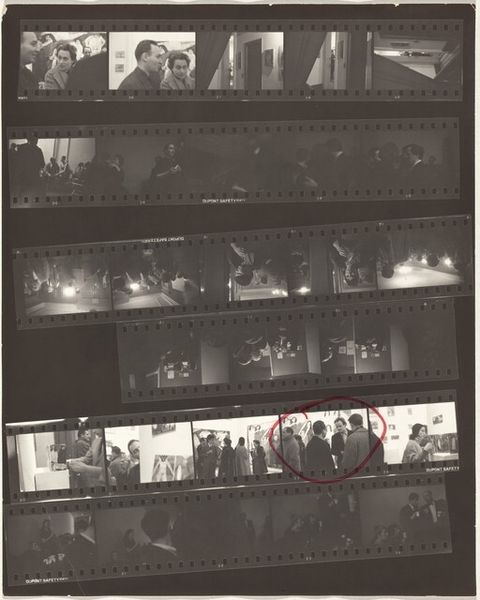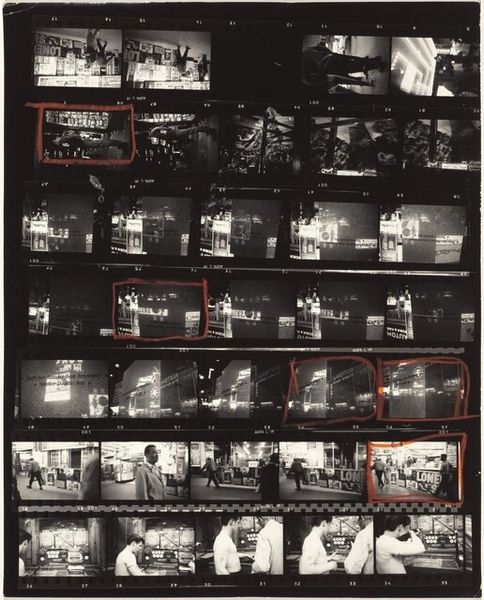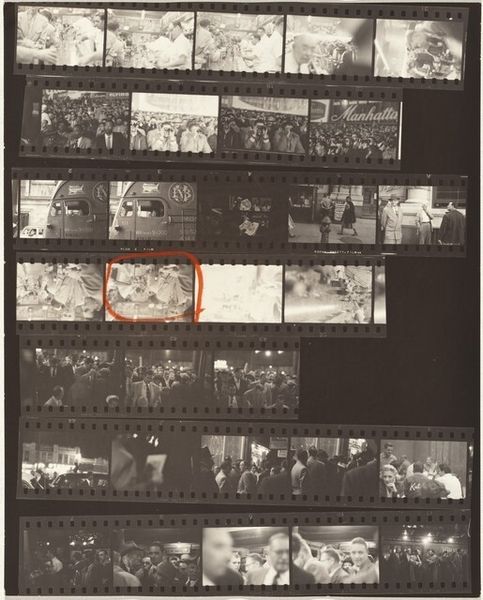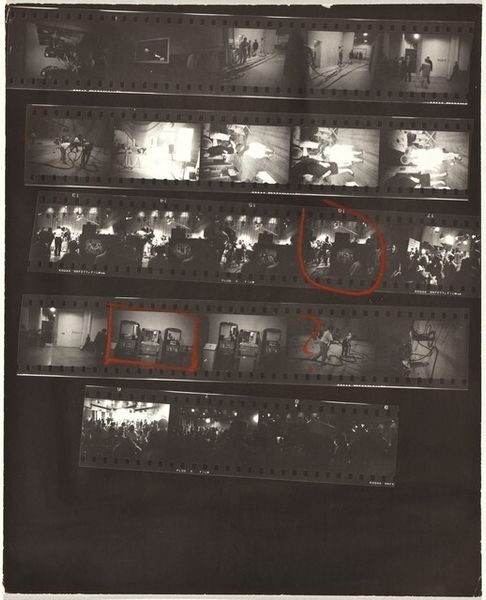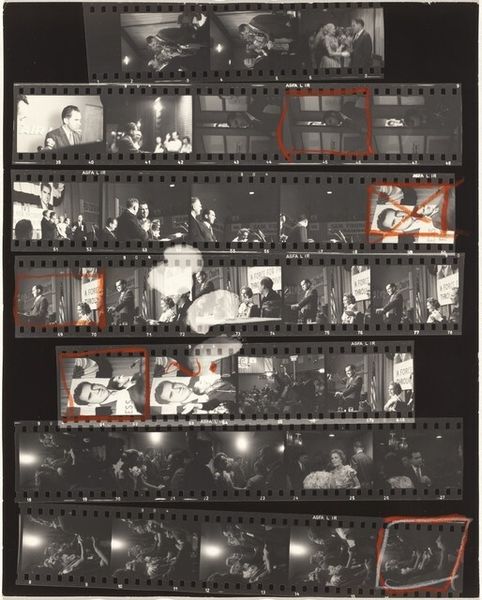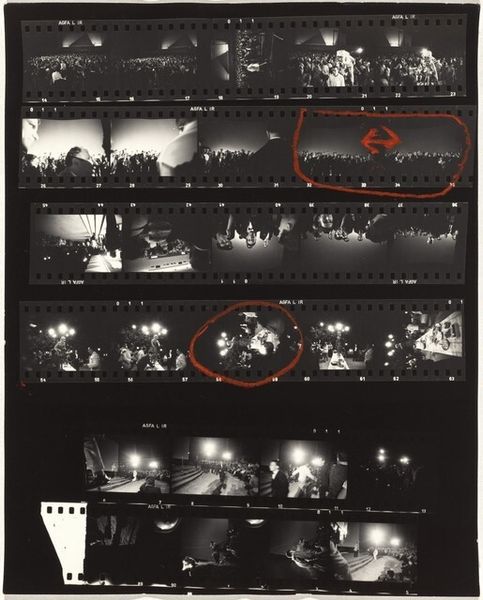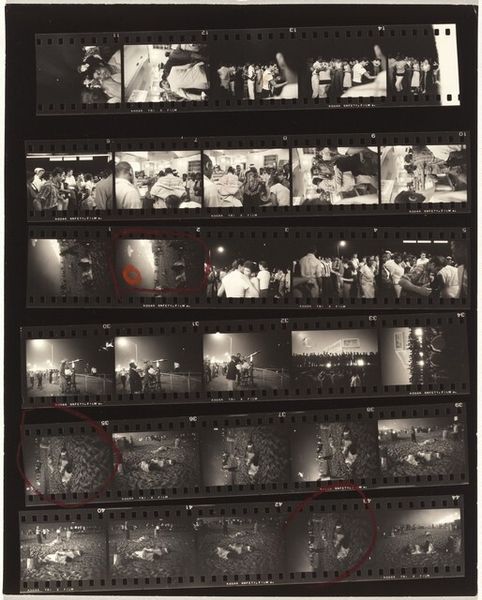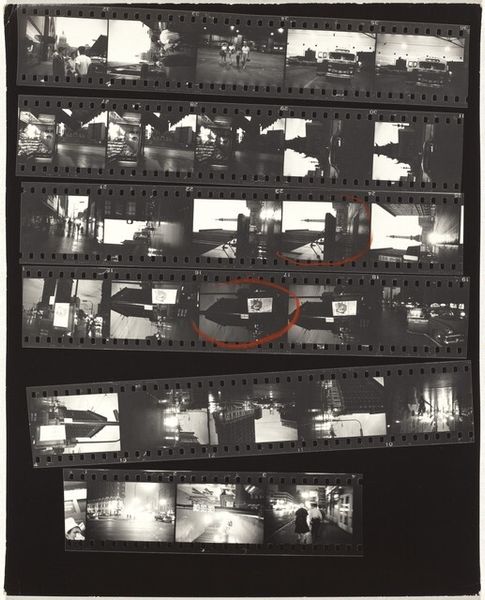
photography, gelatin-silver-print
#
landscape
#
street-photography
#
photography
#
gelatin-silver-print
#
modernism
Dimensions: overall: 25.2 x 20.2 cm (9 15/16 x 7 15/16 in.)
Copyright: National Gallery of Art: CC0 1.0
Curator: Robert Frank’s gelatin-silver print, “Venice, Italy 19,” created in 1964, presents a fascinating composite of images, resembling a photographer's contact sheet. The tight sequencing, framing the disparate content into neat filmstrip-like rows. I must confess, it feels like a collection of incomplete thoughts or sensations, which makes it particularly alluring to me. Editor: It evokes a certain raw energy, wouldn’t you say? There's an urgency, a feeling that these scenes have been snatched, rather than posed or carefully arranged. It’s modern life distilled, captured during the tumult of the mid-twentieth century. Looking at this as a cultural object, it comes to mind that in 1964, Venice might have been grappling with new forms of tourism, the vestiges of WWII and rapid social changes influencing the visual landscape. I see a tension between what Venice once represented and what it was becoming. Curator: Yes, it does avoid a sentimental idealization, I agree, it does project a grittiness, even an anxiety of sorts. And structurally, what stands out to me is how Frank’s composition teases at patterns, a filmstrip format almost begs the viewer to attempt narratives between sequences or to discover links within the varied scales and subjects within. Look at how shadows are constructed from dense to thin, the use of the white negative framing the interior spaces like memories that are both there, and fading. It asks if one should examine how he achieves depth here. Editor: I do consider it does move the street-photography aesthetic from just capturing singular decisive moments towards hinting at an era’s ethos as a whole. Frank captures social strata of a post-war city as both dream, spectacle, and anxiety and these were his primary conceptual aims that changed both modern documentary and portrait photography as genres, this should not be overstated. How it shaped our view through photojournalism and other artworks as the public view it. Curator: Ultimately, "Venice, Italy 19" is not only a record but also a very self-aware reflection upon its artistic intent. I find the arrangement a visual testament to the ever-changing world we occupy, and I hope our listeners feel drawn in. Editor: Yes. As art shapes and informs, the way the camera documents is not a passive capture; it's intrinsically involved in crafting perspectives of both subject and seer alike. It also brings forth conversations.
Comments
No comments
Be the first to comment and join the conversation on the ultimate creative platform.
